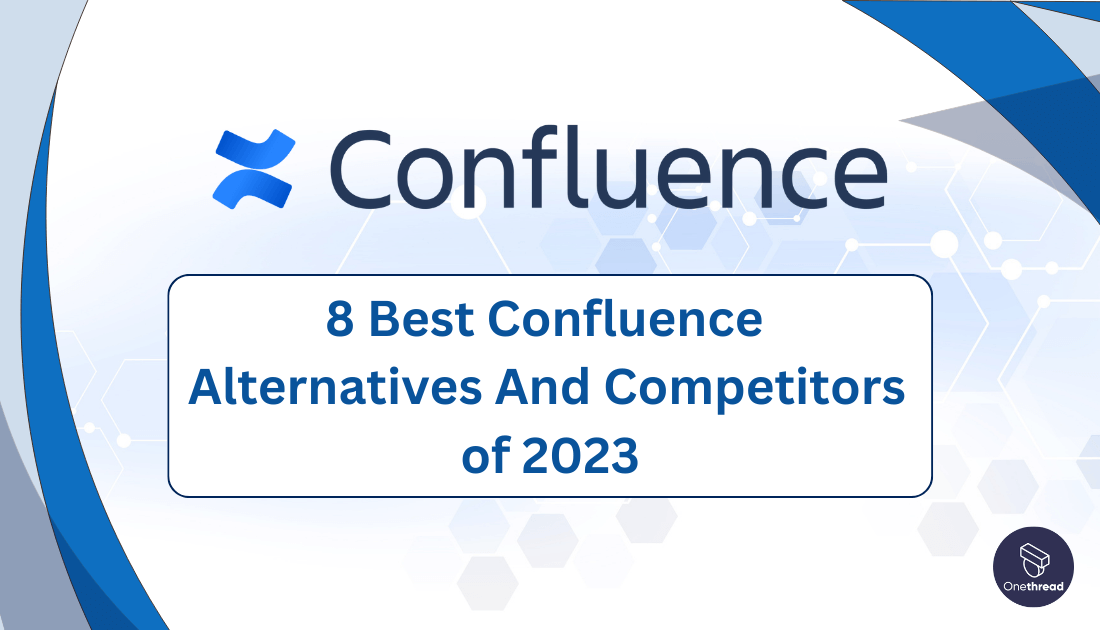Navigating the sea of project management tools can feel like a journey without a map. Confluence has long been a trusted companion on this voyage, but sometimes we need to explore new territories to enhance our collaborative efforts.
You might be yearning for a tool that aligns better with your team dynamics, is easier to use, or offers unique features that Confluence lacks. Whether you’re a product manager on the hunt for simplicity or a team leader seeking enhanced functionality, we’ve curated a list of the top 10 powerful Confluence alternatives.
Dive in and discover the right tool to take your collaboration and project management experience to the next level.
Quick list of Confluence Alternatives
- Onethread: With its user-friendly layout, it excels at promoting collaborative endeavors, making it the preferred choice for projects that emphasize teamwork.
- Zoho Wiki: Empowers users to create and update content with ease
- Swimm: Its automated code documentation and knowledge sharing capabilities
- Microsoft SharePoint: One significant feature of Microsoft SharePoint is its robust version control and document management system
- Slite: A standout feature of Slite is its real-time collaborative editing and note-taking capabilities
- Nuclino: A prominent feature of Nuclino is its visual organization and knowledge mapping capabilities.
- Tettra: A standout feature of Tettra is its powerful search and knowledge discovery functionality.
- DokuWiki: A key feature of DokuWiki is its simple and lightweight syntax for creating and formatting content.
Our reviewers evaluate software independently. Clicks may earn a commission, which supports testing. Learn how we stay transparent & our review methodology
Feature Comparison of Confluence Competitors At a Glance
Here’s a comparison table of the best Confluence competitors including the specified features:
Tool | Knowledge Management | Collaboration Features | Integration Capabilities | User Interface |
 | Manages knowledge and fosters collaboration in teams. | Facilitates collaborative content creation and sharing. | Integrates with Atlassian tools and various third-party apps. | Provides a user-friendly interface for managing documents and content. |
 | Centralizes knowledge collaboratively with workflows. | Enhances teamwork with shared documents and communication. | Limited integration capabilities | Offers an intuitive interface for streamlined knowledge management. |
 | Organizes knowledge for teams and seamless sharing. | Promotes document sharing and team collaboration. | Integrates with other Zoho Suite applications and third-party apps. | Provides an intuitive interface for creating and managing knowledge. |
 | Consolidates knowledge and ensures collaboration. | Facilitates collaboration by embedding knowledge in workflows. | Integrates with development tools and team communication platforms. | Offers a user-friendly interface for integrated knowledge sharing. |
 | Manages and shares knowledge within organizations. | Promotes teamwork through document sharing and co-authoring. | Integrates with Microsoft 365 apps and third-party services. | Provides a familiar interface to Microsoft power users. |
 | Organizes knowledge and enables team collaboration. | Facilitates collaborative writing and shared note-taking. | Integrates with team communication tools and project management platforms. | Offers an intuitive interface for creating and sharing team knowledge. |
 | Creates a knowledge base for collaborative teams. | Encourages team collaboration through shared documents. | Integrates with communication and project management tools. | Provides a user-friendly interface for structured knowledge sharing. |
 | Manages knowledge for teams and improved collaboration. | Encourages collaborative content creation and sharing. | Medium range of integrations | Provides a straightforward interface for structured knowledge sharing. |
 | Organizes knowledge and promotes team collaboration. | Supports collaborative content creation and editing. | Integrates with third-party plugins for added functionalities. | Offers a wiki-style interface for collaborative documentation. |
Onethread – The Best Confluence Alternative

Onethread is a robust project management app that offers a range of features to streamline project workflows. It includes task management, collaboration tools, Gantt charts, resource management, time tracking, document management, reporting, and analytics.
The app integrates with popular productivity tools, allowing seamless data exchange. Onethread is highly customizable, adapting to specific project management processes. Its mobile accessibility ensures that users can manage projects on the go.
With its comprehensive feature set, Onethread aims to simplify project management, enhance collaboration, and improve overall project efficiency. It offers a number of features that make it a great alternative to Confluence, including:
Task Management
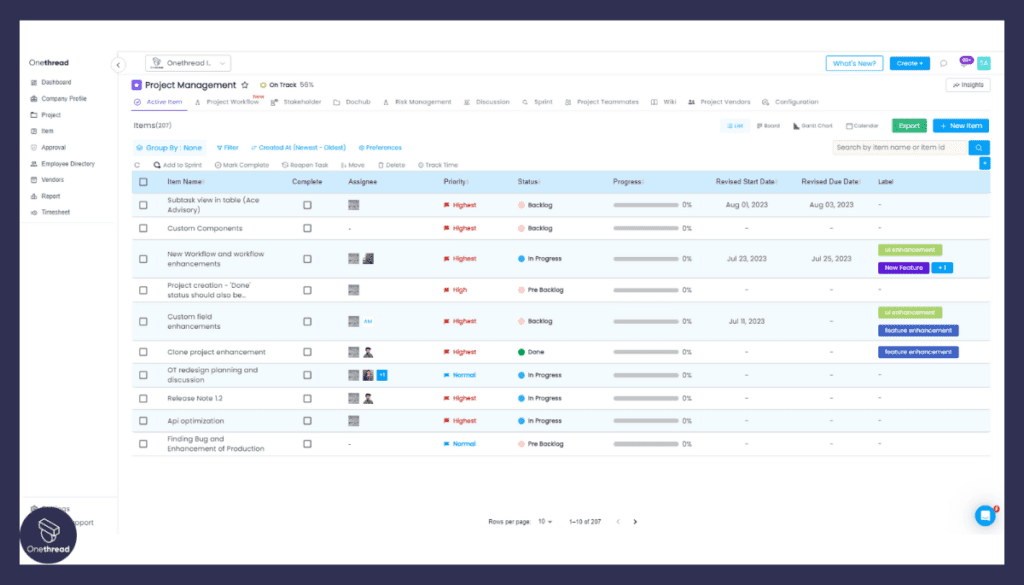
Onethread allows you to create and manage tasks efficiently. You can assign tasks to team members, set due dates, and track progress. It provides a centralized view of all tasks, making it easy to prioritize and delegate work.
Collaboration Tools
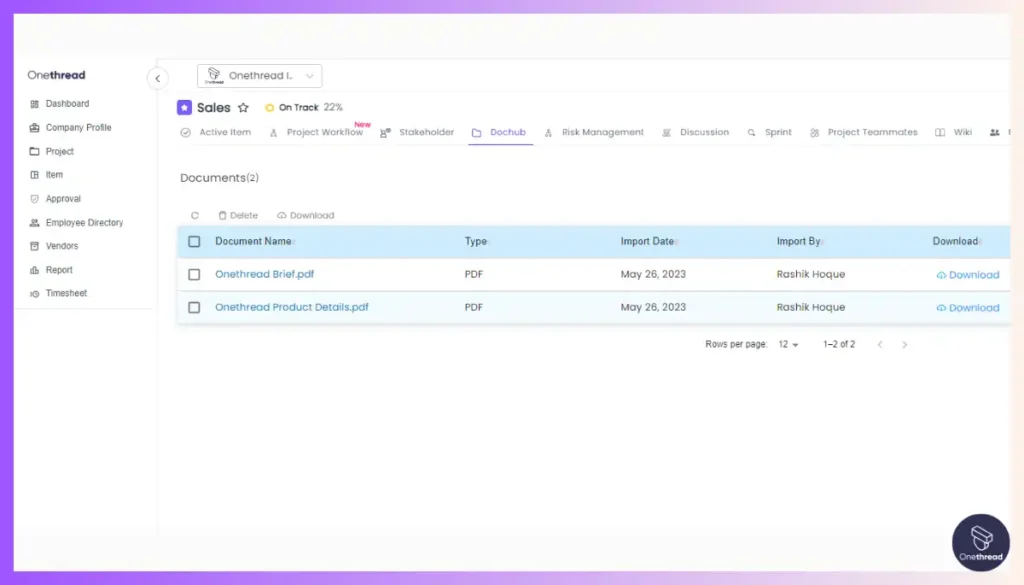
The app offers various collaboration features to facilitate teamwork. You can create project groups, invite team members, and share files and documents. Real-time communication tools like chat and discussion boards enable seamless collaboration and information sharing.
Gantt Charts
Onethread includes interactive Gantt charts that provide a visual representation of project timelines, dependencies, and milestones. This feature helps you plan and schedule tasks effectively, ensuring smooth project execution.
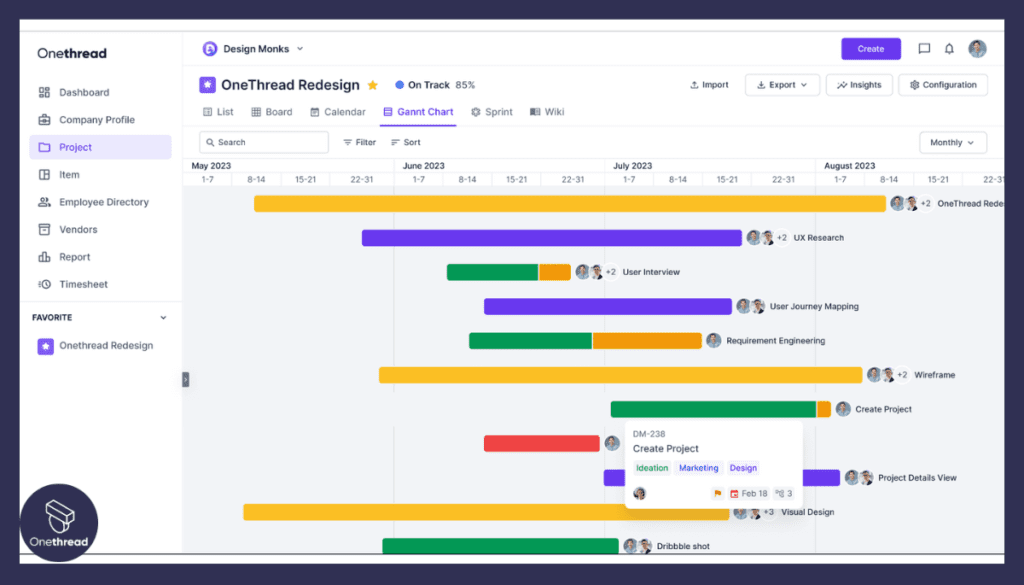
Resource Management
With Onethread, you can manage project resources efficiently. It allows you to allocate resources, track their availability, and monitor their utilization. This feature helps prevent resource conflicts and ensures optimal resource allocation.
Reporting and Analytics
The app includes a time tracking feature that enables team members to log their work hours. This helps in monitoring project progress, estimating task durations, and generating accurate reports. The app offers reporting and analytics capabilities to track project performance.
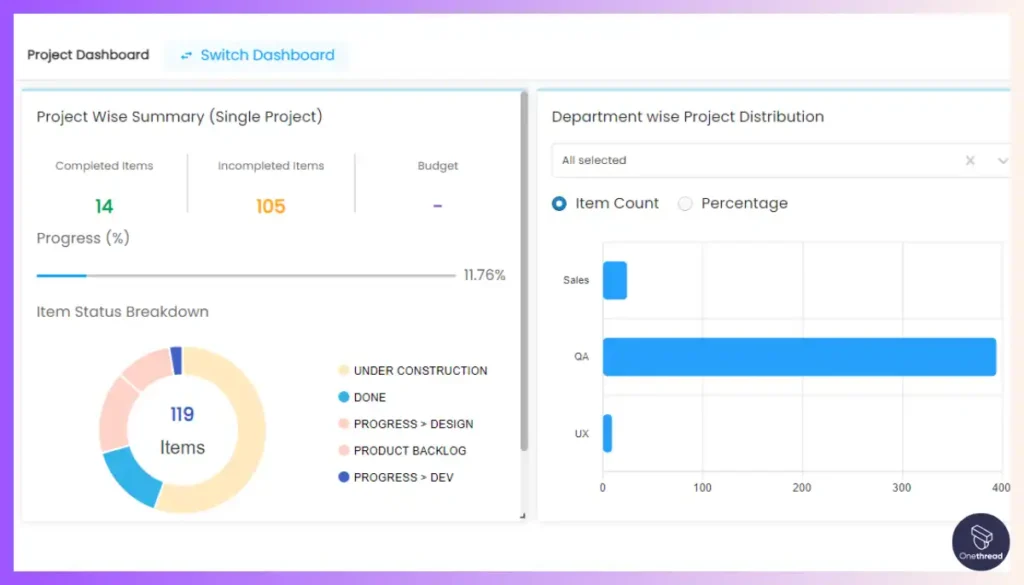
You can generate various reports, such as task progress, resource utilization, and project costs. These insights help in evaluating project success and making data-driven decisions.
Pros and Cons
Pros:
- Robust integration with widely used software tools
- Extensively adaptable user interface
- Outstanding support for managing extensive projects
Cons:
- Beginners might feel overwhelmed by the extensive range of features
Pricing

- Free
- Growth: $3.6/user/month
- Scale: $6/user/month
Onethread vs Confluence: A Quick Comparison
Feature | Onethread | Confluence |
Collaboration | Yes | Yes |
Gantt Charts | Yes | No |
Resource Management | Yes | No |
Task Management | Yes | Yes |
Discussion & Wiki | Yes | No |
Document Management | Yes | Yes |
What Is Confluence and Why Is It Used?
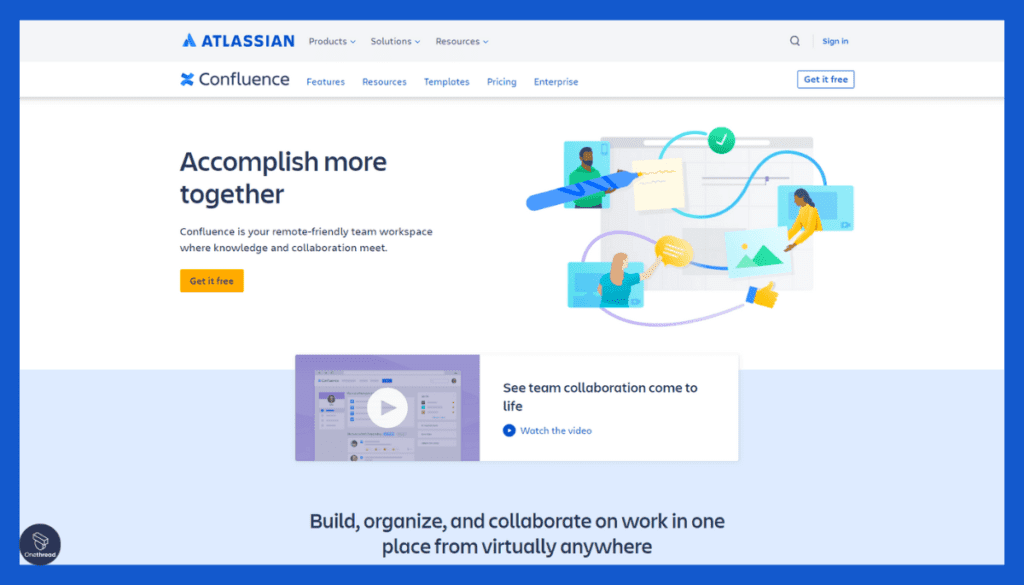
Confluence is a collaboration tool developed by Atlassian that allows teams to organize, discuss, and collaborate on projects all in one place. It is primarily used to create, share, and organize documents in a structured way.
Confluence’s primary goal is to make the process of sharing knowledge across teams and departments more efficient.
1. Collaborative Content Creation and Editing
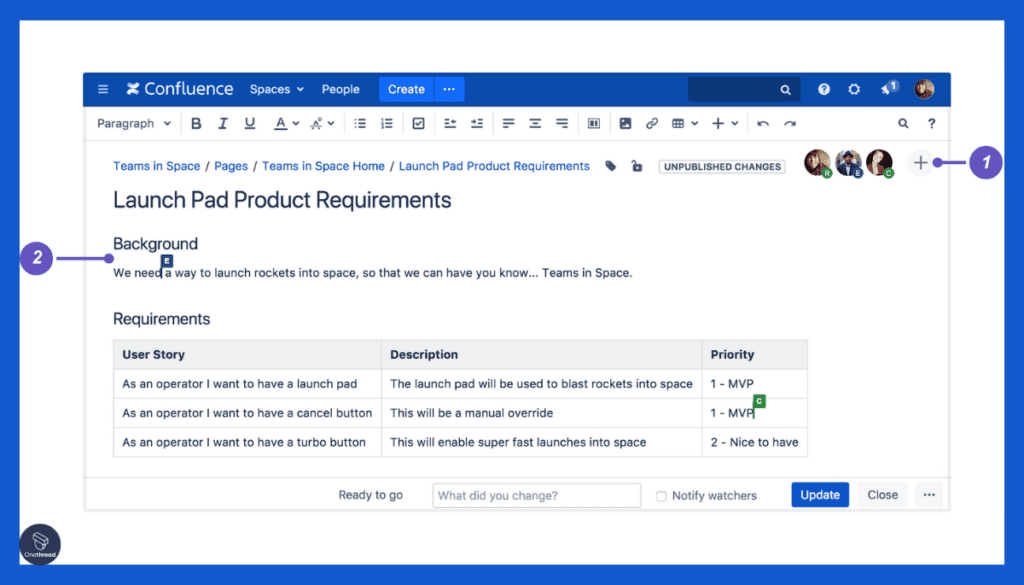
Confluence facilitates collaborative content creation and editing, allowing multiple team members to work on documents, pages, and articles simultaneously. This real-time collaboration enhances teamwork and information sharing within the platform.
2. Flexible Page Structuring
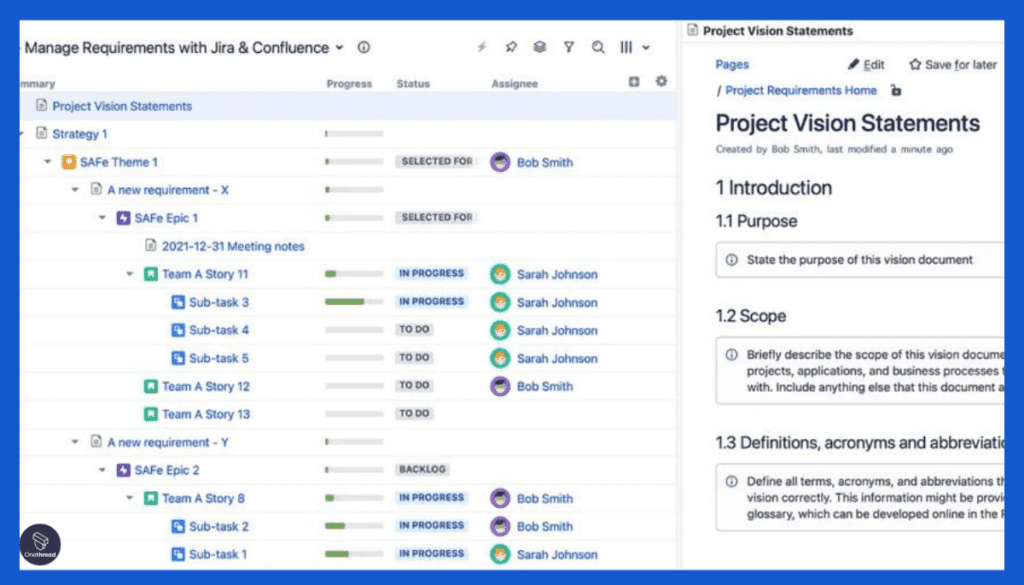
Confluence offers a flexible page structuring system, allowing users to create organized spaces, pages, and sub-pages. This hierarchical arrangement aids in categorizing and navigating through content efficiently, promoting a clear information hierarchy.
3. Rich Media Embedding and Macros
Confluence supports the embedding of rich media, such as images and videos, along with dynamic content elements through macros. Macros enhance the visual appeal of content and provide additional functionality, contributing to engaging and interactive documentation.
4. Powerful Search and Discovery
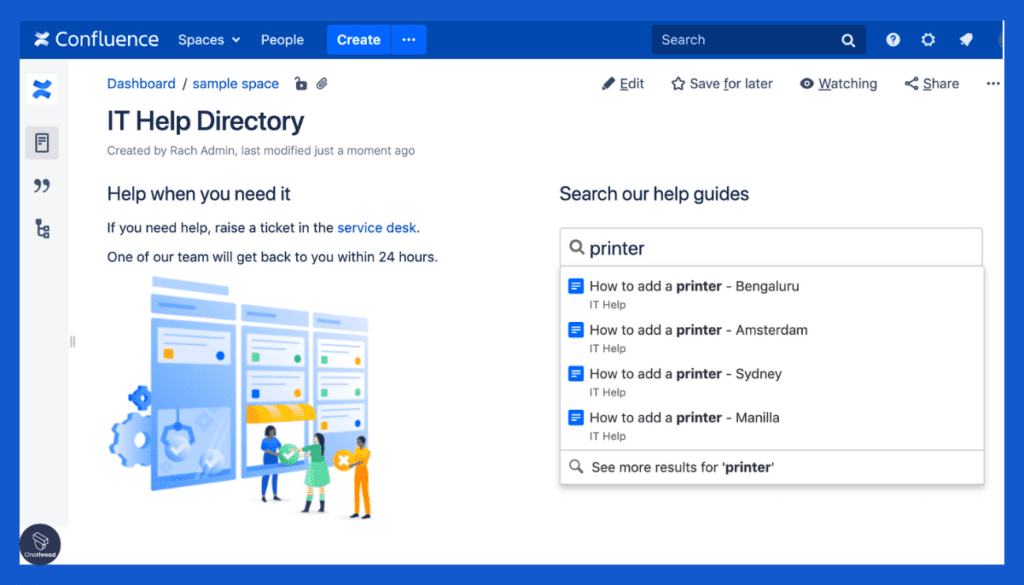
Confluence boasts a robust search functionality that enables users to quickly locate specific information within its vast knowledge base. The advanced search options and filters aid in precise information retrieval, facilitating efficient navigation.
5. Integration with Third-Party Tools
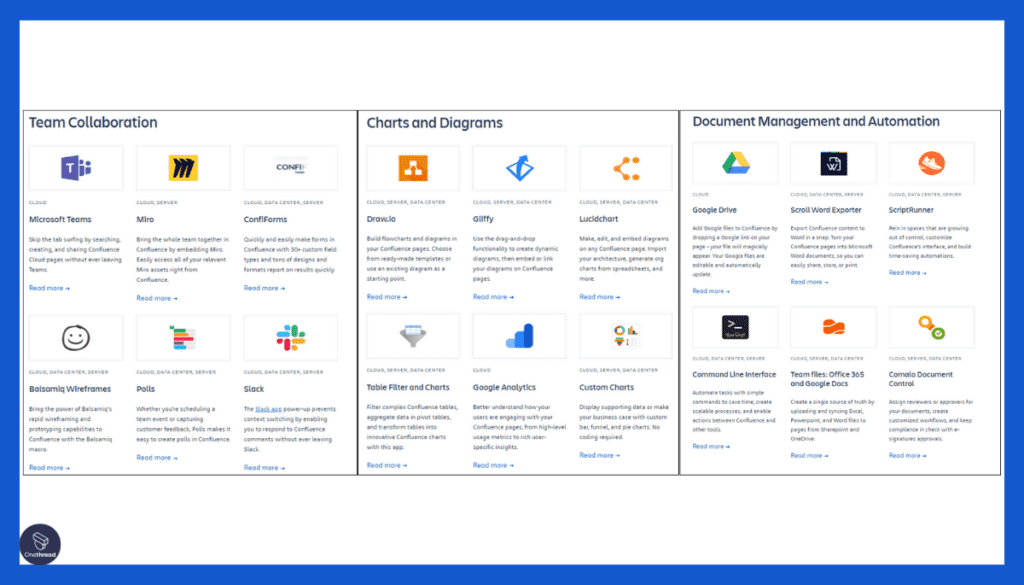
Confluence seamlessly integrates with popular third-party tools like Jira, Trello, and Slack. This integration streamlines project management and communication by connecting Confluence with other essential tools used in the workflow.
Pros and Cons
Pros:
- Robust integration with third-party tools like Jira and Slack.
- Flexible and collaborative content creation and editing.
- Hierarchical page structuring enhances content organization.
Cons:
- Potential for version control issues with collaborative editing.
Customer Ratings
- G2: 4.1 (3,653+ reviews)
- Capterra: 4.5 (3,063+ reviews)
Pricing:
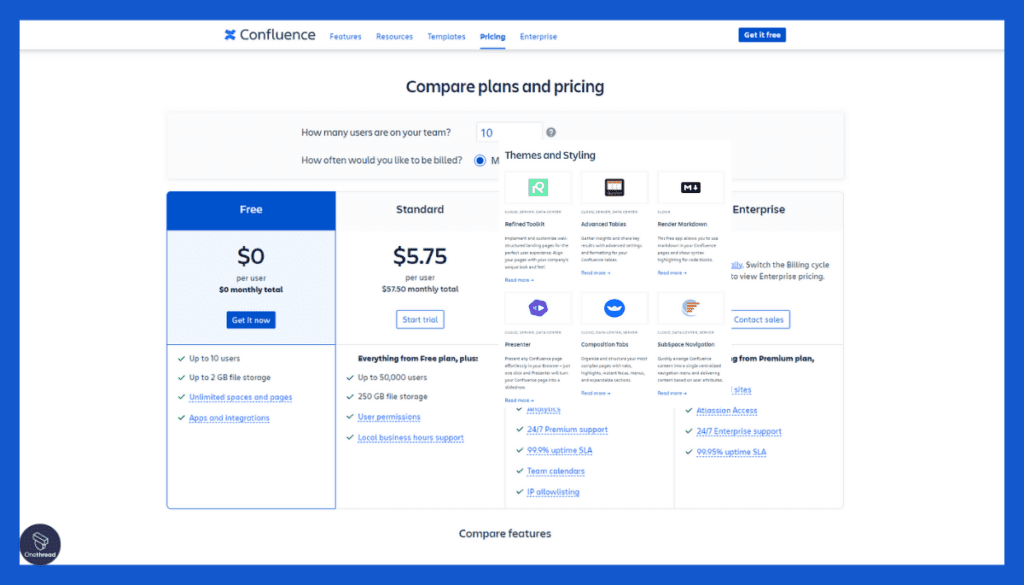
- Free
- Standard: $5.75/ Per user
- Premium: $11/ Per user
Why Search for Confluence Alternatives?
While Confluence is robust, some users may seek alternatives due to:
- Complexity: Confluence can be overwhelming for beginners due to its extensive features.
- Cost: Small businesses or startups may find Confluence’s pricing to be steep.
- User interface: Some users find Confluence’s user interface to be non-intuitive or outdated.
- Performance: Larger pages with multiple attachments or comments can sometimes load slowly.
- Specific feature needs: Some users might need features or capabilities that Confluence does not offer.
Other Alternatives to Confluence: Get the Confluence Benefits from Better Alternatives
Confluence’s unique selling proposition is its comprehensive knowledge management system coupled with extensive collaboration tools.
However, when the need for a more user-friendly interface, specific features, or budget constraints arise, it’s necessary to look for alternatives. In the following sections, we’ll present 10 alternatives to Confluence.
Zoho Wiki
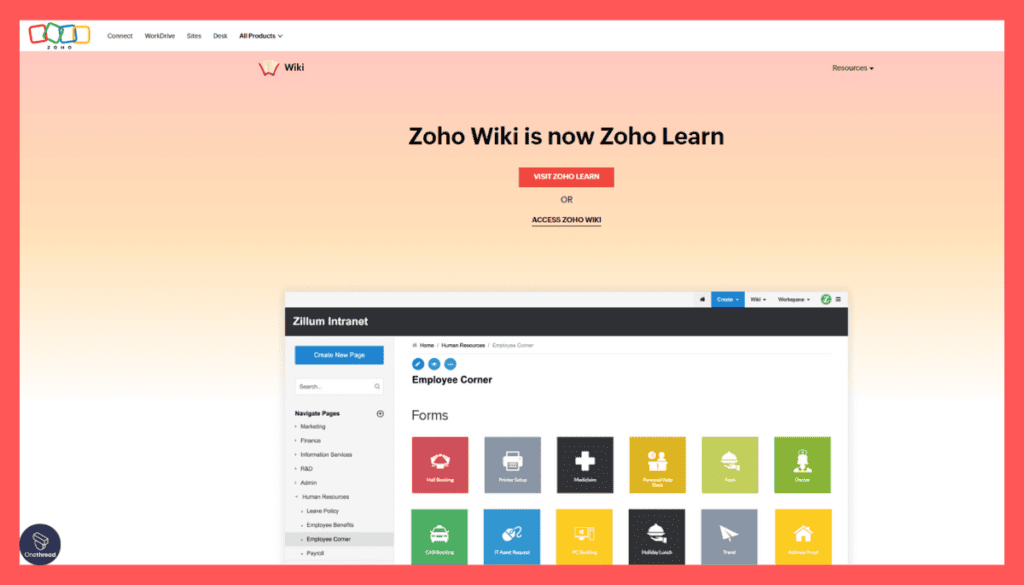
Zoho Wiki is an online collaboration and knowledge-sharing tool, a part of the broader Zoho Suite. It enables teams to create collaborative documents and makes information easy to retrieve and update.
Users can create pages and workspaces, categorize them, and control their accessibility. Zoho Wiki’s simplicity, cost-effectiveness, and integrations with other Zoho applications make it a valuable tool for businesses, especially small to medium-sized ones.
Features of Zoho Wiki
Intuitive WYSIWYG Editor
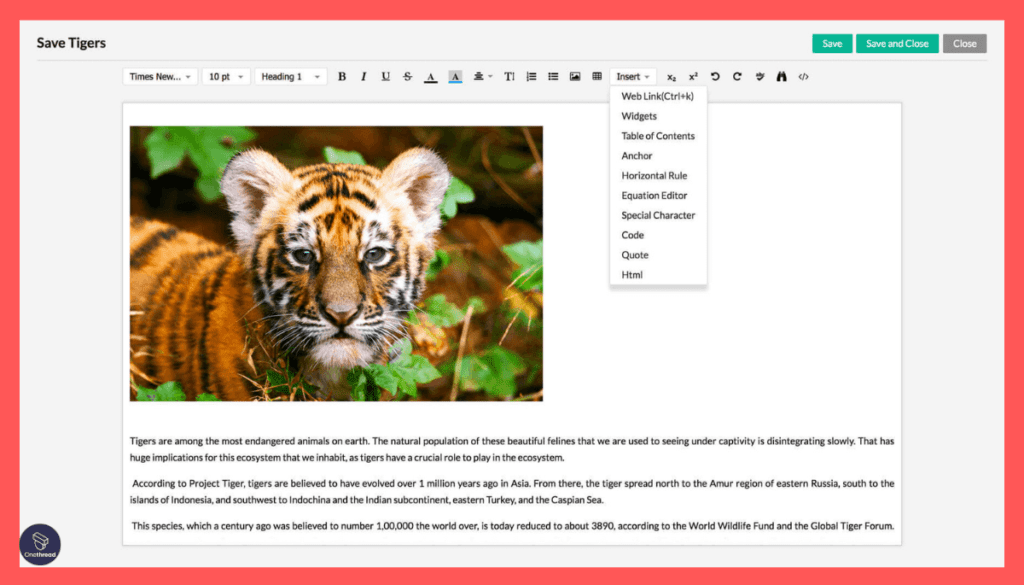
Zoho Wiki provides a What You See Is What You Get (WYSIWYG) editor, allowing users to create and format content with the ease of a familiar word processor. This feature simplifies content creation without requiring technical skills.
Customizable Templates
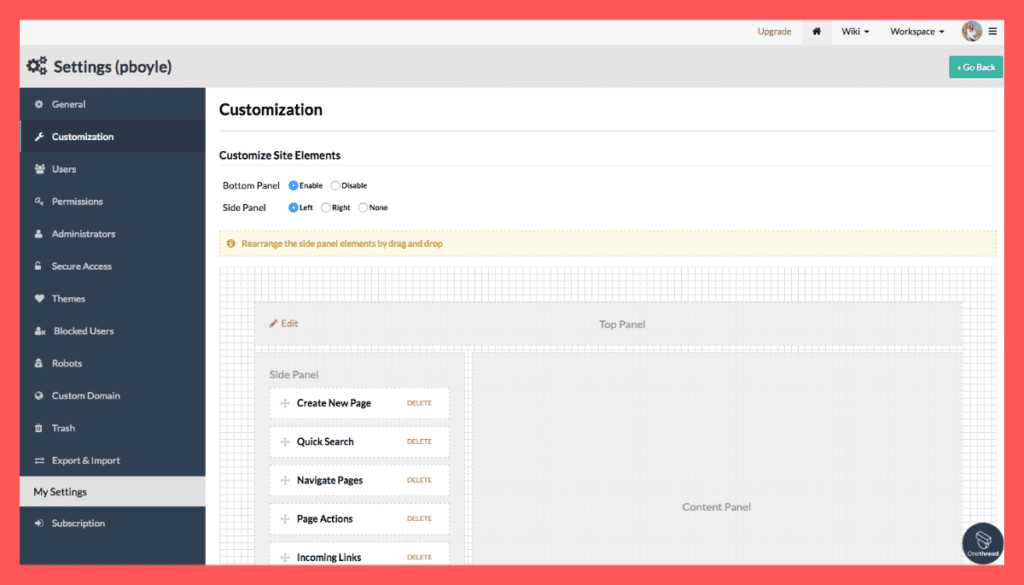
The platform offers customizable templates that cater to different use cases, from documentation to knowledge bases. These templates streamline content creation and maintain consistency across various pages.
Multi-media Integration
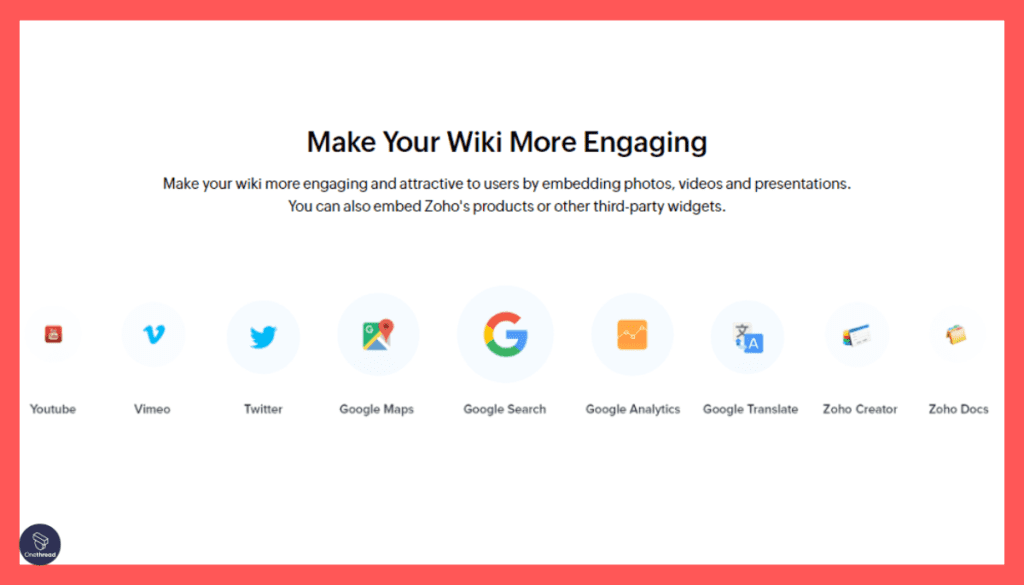
Zoho Wiki allows users to embed various multimedia elements, such as images, videos, and audio clips, into their content. This enhances the visual appeal and engagement of the created pages.
Access Controls and Permissions
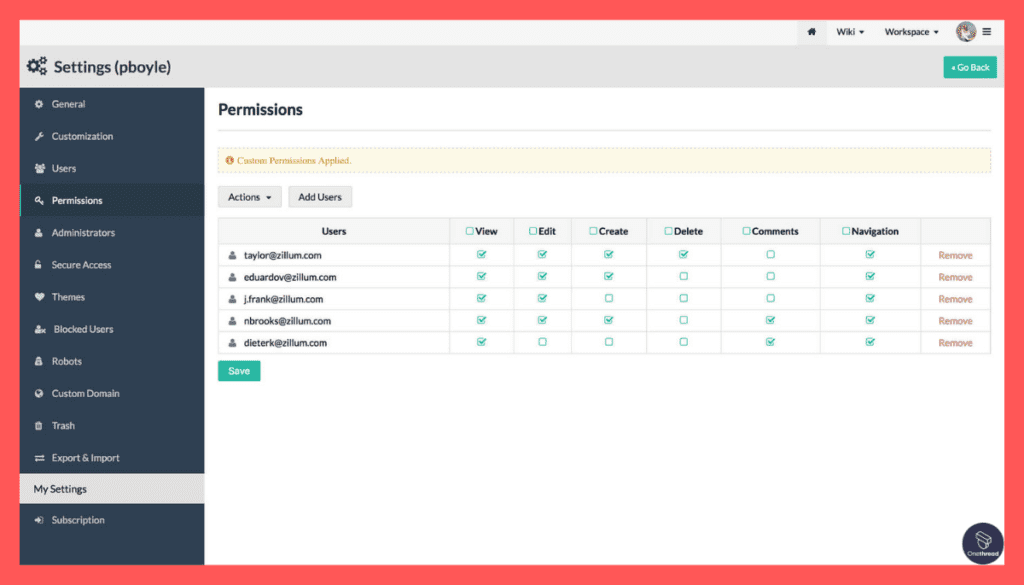
The platform offers robust access control settings, enabling administrators to define who can view, edit, and contribute to specific pages or sections. This ensures data security and maintains content integrity.
Version History and Tracking
Zoho Wiki keeps track of revisions and version history for every page. Users can review changes, revert to previous versions, and maintain a clear audit trail of content edits.
Pros and Cons
Pros:
- Intuitive editor simplifies content creation.
- Customizable templates expedite page setup.
- Multimedia integration enriches content presentation.
- Access controls ensure data security.
- Version history aids content tracking and management.
Cons:
- Complex formatting might require some learning.
Customer Ratings
- G2: 4.1 (36+ reviews)
- Capterra: 4.8 (160+ reviews)
Pricing
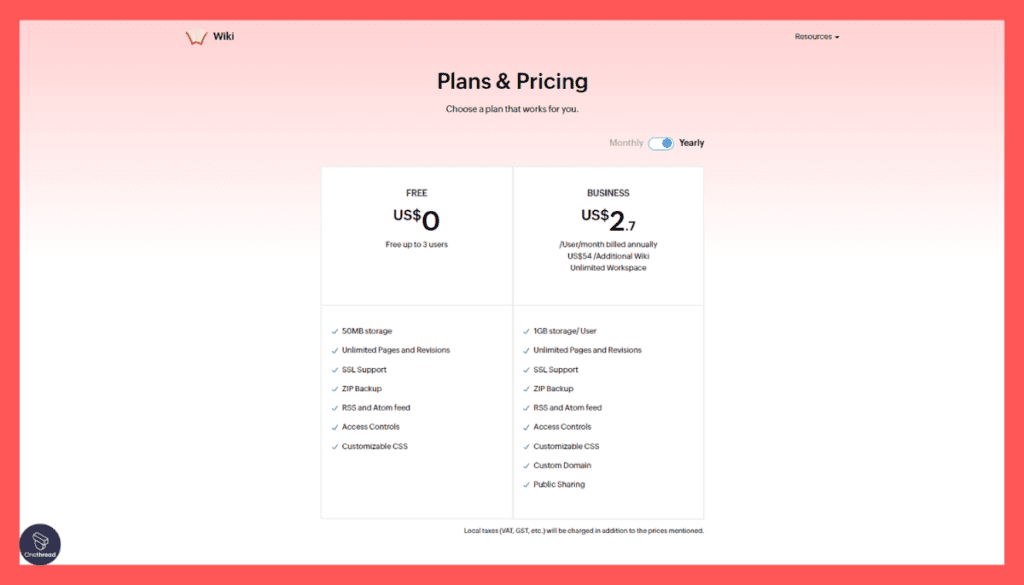
- Free: For up to 3 users and 3 workspaces
- Standard: $3/user/month (billed annually), includes unlimited workspaces and file storage
- Enterprise: $6/user/month (billed annually), includes advanced features like user management and multiple domain mapping
Is Zoho Wiki Better than Confluence?
The comparison between Zoho Wiki and Confluence depends on specific use cases. If you’re already using Zoho products, Zoho Wiki’s seamless integration could make it a better option.
Moreover, Zoho Wiki is more cost-effective and might be easier for non-tech-savvy teams to adopt due to its simplicity. However, Confluence offers more advanced features and extensive customization options, which could make it a better choice for larger organizations or teams with complex needs.
Our review of Zoho Wiki
Zoho Wiki is a simple yet effective collaboration tool. Its strength lies in its simplicity, ease of use, and integration with the Zoho suite of products. It’s particularly useful for small to medium-sized businesses on a budget.
However, it may lack some of the advanced features and customizations that larger teams or organizations might require. Despite this, Zoho Wiki offers a solid solution for knowledge sharing and collaborative work, especially for those already invested in the Zoho ecosystem.
Swimm
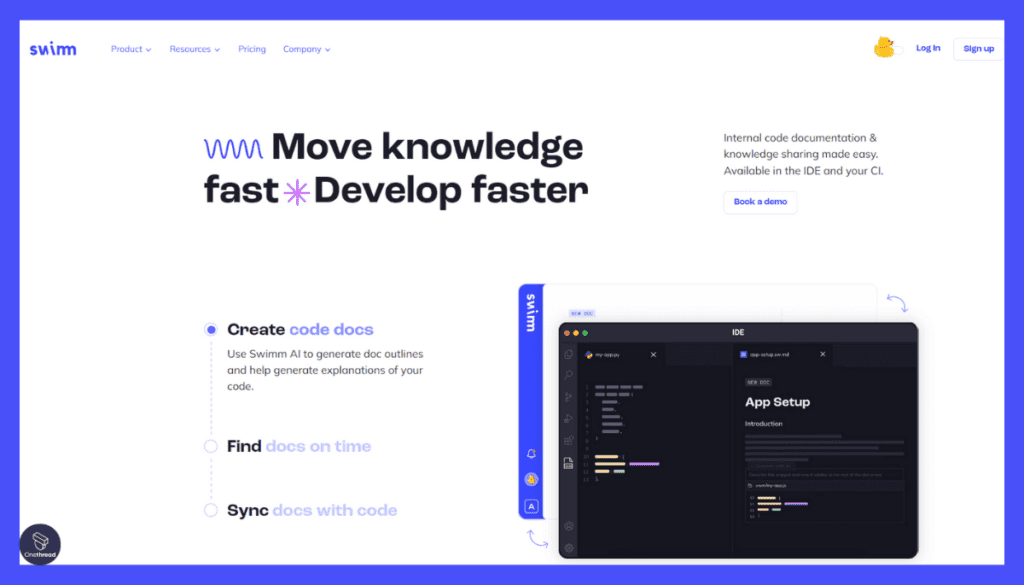
Swimm is a collaboration tool that bridges the gap between code and documentation. It enables teams to create auto-synced, always up-to-date, modifiable documentation alongside their code.
The tool is particularly beneficial for software developers as it allows them to write documents that are intimately tied to their codebase, thus making the documentation an integral part of the software development process.
Features of Swimm
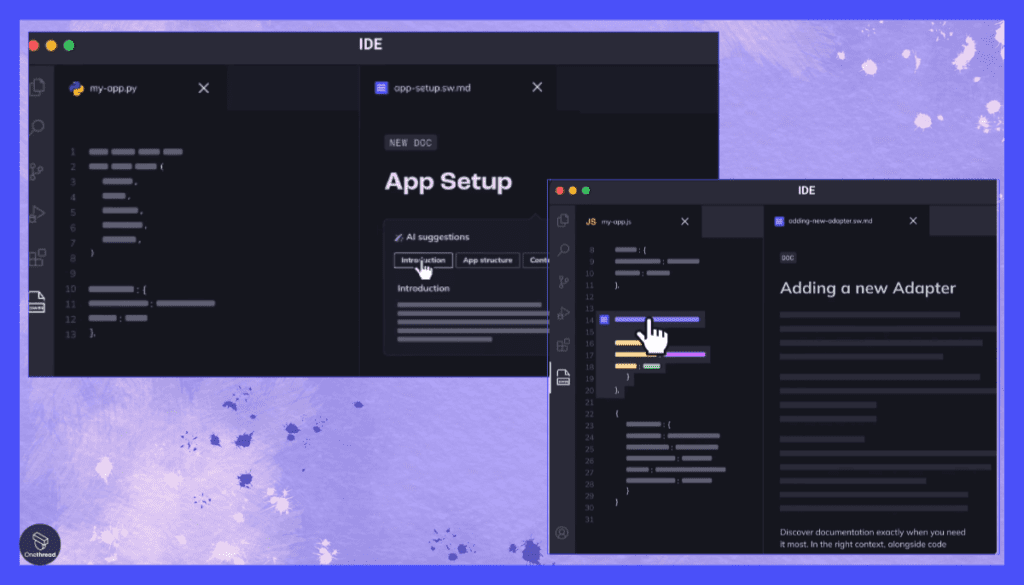
Automated Code Documentation
Swimm revolutionizes code documentation by automating the process. It extracts information from code comments and annotations, converting them into clear and organized documentation. This feature not only accelerates the documentation process but also maintains accuracy by ensuring that documentation stays synchronized with code changes.
Contextual Code Examples
Swimm enhances code comprehension by providing contextual code examples directly within the documentation. These examples showcase practical applications of the code, helping developers understand how to use it in real-world scenarios.
Collaborative Documentation
Swimm encourages collaboration among team members in maintaining documentation. Developers can contribute updates, corrections, and improvements, ensuring that the documentation remains accurate and benefits from the collective knowledge of the team.
Version Control Integration
Integration with version control systems, such as Git, is a valuable feature. Swimm correlates documentation with specific code commits, enabling users to understand the evolution of the codebase alongside corresponding documentation changes.
Searchable Documentation
Swimm’s searchable documentation is a time-saving feature. Developers can quickly locate relevant information by searching for keywords, enabling efficient problem-solving and reducing the time spent hunting for specific details.
Pros and Cons
Pros:
- Automated documentation reduces manual effort.
- Contextual code examples enhance comprehension.
- Collaboration maintains accurate and up-to-date documentation.
- Version control integration ensures synchronization with code changes.
- Searchable documentation streamlines information retrieval.
Cons:
- Initial setup may require integration configuration.
Customer Ratings
- G2: 4.3 (23 reviews)
- Capterra: 4.6 (18 reviews)
Pricing
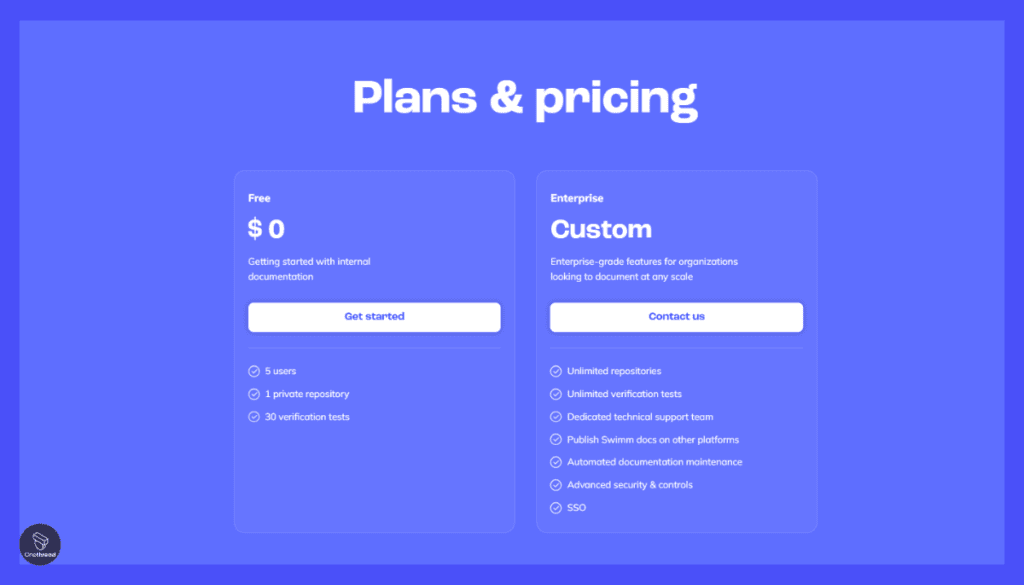
- Free: For up to 10 users
- Team: $20/user/month (billed annually), includes unlimited documentation and integrations
- Enterprise: Custom pricing and features
Is Swimm Better than Confluence?
Swimm and Confluence serve different purposes. While Confluence is a more general collaboration and knowledge management tool, Swimm is specialized in-code documentation.
If your primary need is to document your code and keep the documentation synced with code changes, Swimm is the superior option. However, for broader collaboration needs and document management, Confluence might be a better fit.
Our Review of Swimm
Swimm offers a unique solution to the challenge of keeping documentation in sync with code. Its integration with the codebase and the ease of creating, updating, and navigating documentation make it a standout tool for software development teams.
It is not as versatile as a broader collaboration tool like Confluence, but its focus on code documentation is its strength. For teams striving to maintain up-to-date documentation alongside their codebase, Swimm presents an excellent choice.
Microsoft SharePoint
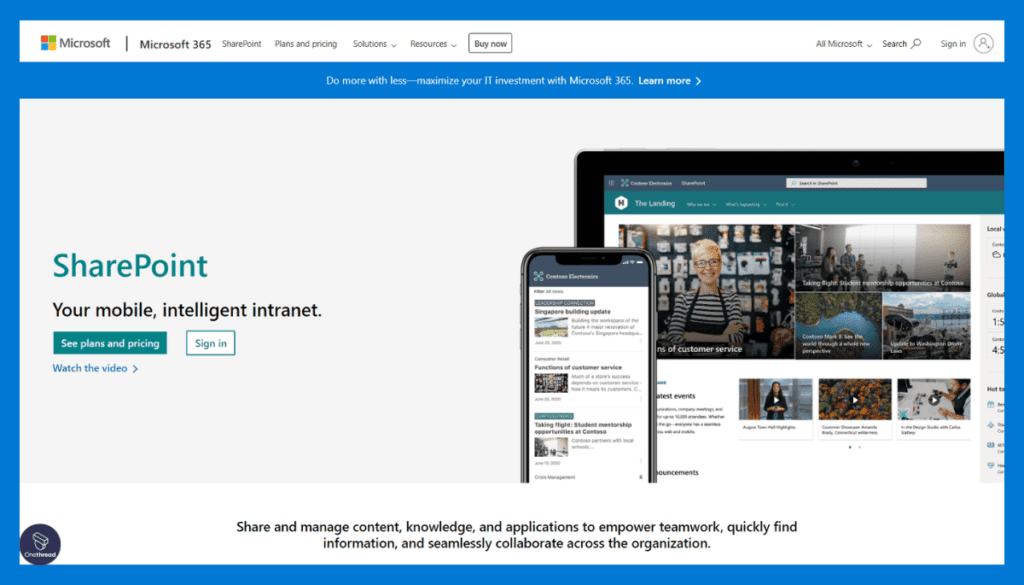
Microsoft SharePoint is a web-based collaborative platform that primarily functions as a document management and storage system. It’s part of the Microsoft Office family, which allows it to integrate smoothly with other Microsoft tools.
SharePoint enables organizations to create websites and portals to share and collaborate on documents, reports, and other resources, maintaining a secure, organized, and accessible workspace.
Features of Microsoft SharePoint
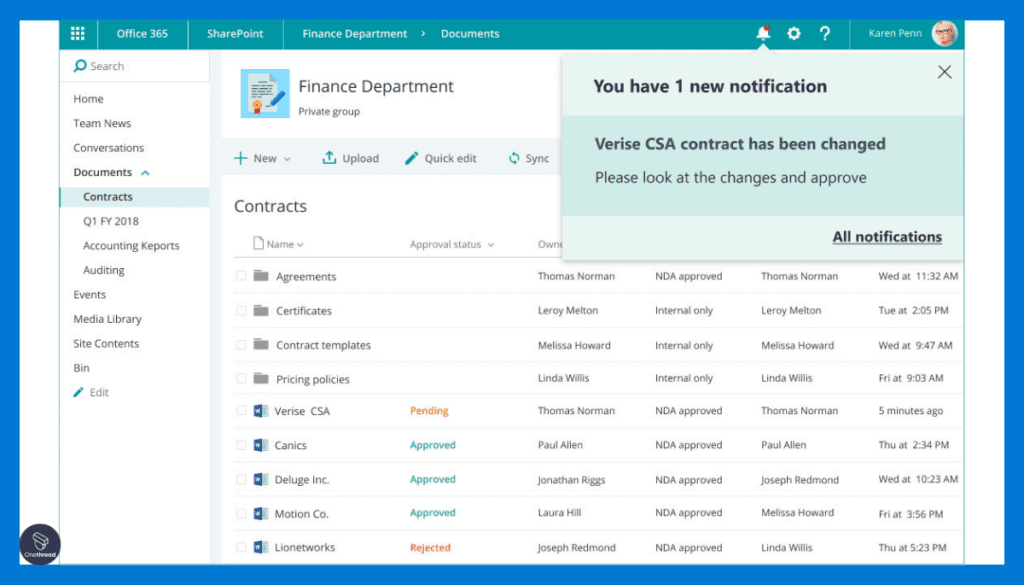
Document Management
Microsoft SharePoint serves as a robust document management platform. It provides secure storage for various file types, ensuring that documents are organized and easily accessible.
Version control features allow teams to track changes, revert to previous versions if needed, and collaborate on documents in real time. This feature streamlines document collaboration and ensures that the most up-to-date information is always available.
Collaboration and Communication
SharePoint offers an array of collaboration tools that empower teams to work together effectively. Team sites and communication sites provide dedicated spaces for teams to share information, documents, and updates.
Integration with Microsoft Teams enhances real-time communication by offering instant messaging, video conferencing, and document co-authoring within a unified platform.
Customizable Workflows
SharePoint’s customizable workflows enable organizations to automate business processes. Users can design workflows to streamline tasks, approvals, and notifications. This feature not only saves time by reducing manual steps but also enhances consistency and accuracy across different processes.
Business Intelligence Integration
Integration with Power BI, Microsoft’s business intelligence tool, empowers users to create interactive data visualizations and reports. This integration facilitates data-driven decision-making by providing insights into key metrics and trends, which can be shared across the organization for better understanding.
Search and Discovery
SharePoint’s search capabilities make information discovery efficient. Users can conduct searches based on keywords and phrases, and advanced search options allow filtering by metadata, content type, and other attributes. Delve, another feature, suggests relevant documents and people based on user activity and relationships.
Pros and Cons
Pros:
- Robust document management and version control.
- Facilitates collaboration and communication within teams.
- Customizable workflows automate business processes.
- Integration with Power BI enhances data analysis.
- Powerful search functionality improves information discovery.
Cons:
- Learning curve for advanced features and customization.
Customer Ratings
- G2: 4 (8,294+ reviews)
- Capterra: 4.3 (5,025+ reviews)
Pricing
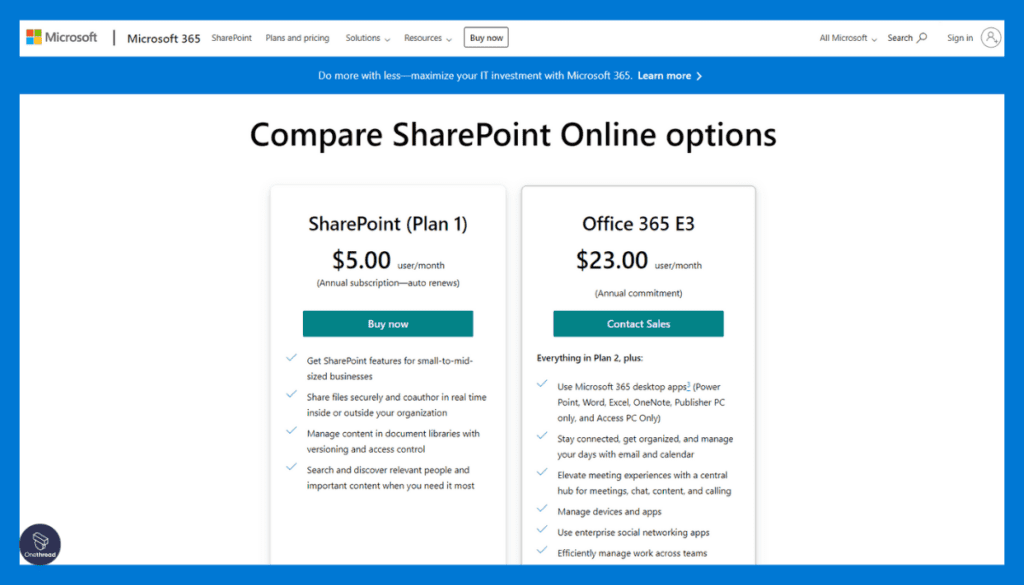
- SharePoint Online Plan 1: $5/user/month
- SharePoint Online Plan 2: $10/user/month
- Microsoft 365 Business Basic (includes SharePoint): $5/user/month
- Microsoft 365 Business Standard (includes SharePoint): $12.50/user/month
Is Microsoft SharePoint Better than Confluence?
Microsoft SharePoint and Confluence have similar functionalities but are optimized for different use cases. SharePoint’s deep integration with Microsoft products makes it a superior choice for organizations heavily invested in the Microsoft ecosystem.
On the other hand, Confluence’s flexibility and ability to work well with a variety of project management and development tools could make it a better fit for some teams.
Our Review of Microsoft SharePoint
Microsoft SharePoint is a robust platform for collaboration, document management, and intranet creation. Its key strength lies in its seamless integration with the Microsoft ecosystem, making it a logical choice for businesses heavily reliant on Microsoft products.
While its user interface can be complex for new users, its features are powerful and comprehensive. However, SharePoint may be overkill for smaller teams or organizations that don’t require the broad functionality it provides.
Slite
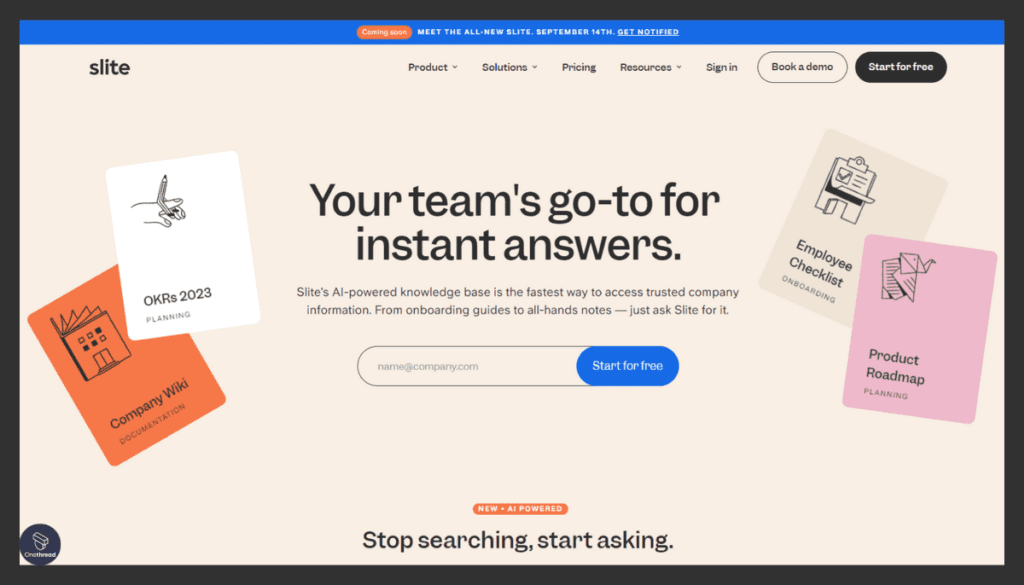
Slite is a collaborative documentation tool designed primarily for remote and distributed teams. The platform aims to bring all team knowledge into a centralized, easy-to-navigate space.
With Slite, teams can create, share, and update documents in real-time, promoting efficient and seamless collaboration.
Features of Slite
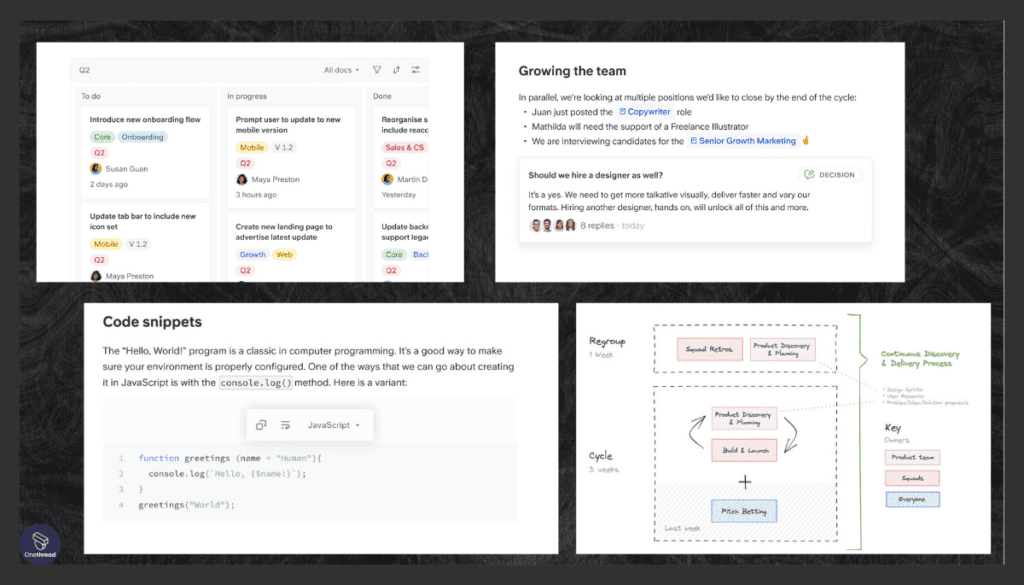
Structured Note-Taking
Slite offers a structured note-taking system that allows users to organize information into categories, folders, and subfolders. This feature ensures that notes are well-organized and easy to navigate, enhancing information retrieval.
Slite’s note-taking capabilities are particularly helpful in capturing meeting minutes, brainstorming sessions, and project planning discussions.
Real-Time Collaboration
The platform supports real-time collaboration, enabling team members to work together on the same document simultaneously. This feature fosters dynamic collaboration, where changes and additions are visible in real time.
Real-time collaboration is especially useful for remote teams, as it reduces delays and ensures that everyone is on the same page regardless of their location.
Team Knowledge Sharing
Slite serves as a repository for sharing knowledge within the team. Users can create and curate content such as guides, tutorials, and best practices, making it easier for team members to learn and access valuable information.
This knowledge sharing capability contributes to better onboarding processes and ongoing skill development.
Rich Text Formatting and Embedding
Slite’s rich text formatting tools allow users to create visually appealing content. Users can format text, add headers, lists, and tables, enhancing the readability of their notes.
Additionally, Slite supports embedding images, videos, and links, making it possible to create comprehensive and engaging documents.
Powerful Search Functionality
Slite’s powerful search functionality enables users to quickly find specific information within their notes and documents. The search feature extends to content within images and attachments, improving information retrieval.
This search feature is especially beneficial as the volume of content grows, ensuring that users can locate relevant information efficiently.
Pros and Cons
Pros:
- Structured note-taking enhances organization and categorization.
- Real-time collaboration accelerates teamwork and decision-making.
- Knowledge sharing promotes onboarding and skill development.
- Rich text formatting and embedding improve content creation.
- Powerful search functionality ensures efficient information retrieval.
Cons:
- Some users might require time to adapt to the structured note-taking system.
Customer Ratings
- G2: 4.7 (193+ reviews)
- Capterra: 4.7 (39+ reviews)
Pricing

- Free: For small teams starting to write together
- Standard: $6.67/member/month (billed annually), includes unlimited private notes and advanced collaboration features.
- Enterprise: Custom pricing, includes advanced security features and priority support.
Is Slite Better than Confluence?
The choice between Slite and Confluence depends on your specific needs. Slite excels with its simplicity, and ease of use, and is particularly suited to remote teams.
On the other hand, Confluence offers more comprehensive features and is better suited to large teams and complex projects. If you are a small to medium-sized team looking for a simple tool, Slite may be the better choice.
Our Review of Slite
Slite stands out for its clean, intuitive interface and its focus on making team collaboration as simple as possible. The platform’s real-time editing and commenting capabilities, coupled with its strong integration features, make it an excellent choice for distributed teams.
However, for larger teams or organizations requiring more complex functionality, it might fall short. Overall, for teams needing a simple, streamlined tool for knowledge management and collaboration, Slite is a great choice.
Nuclino
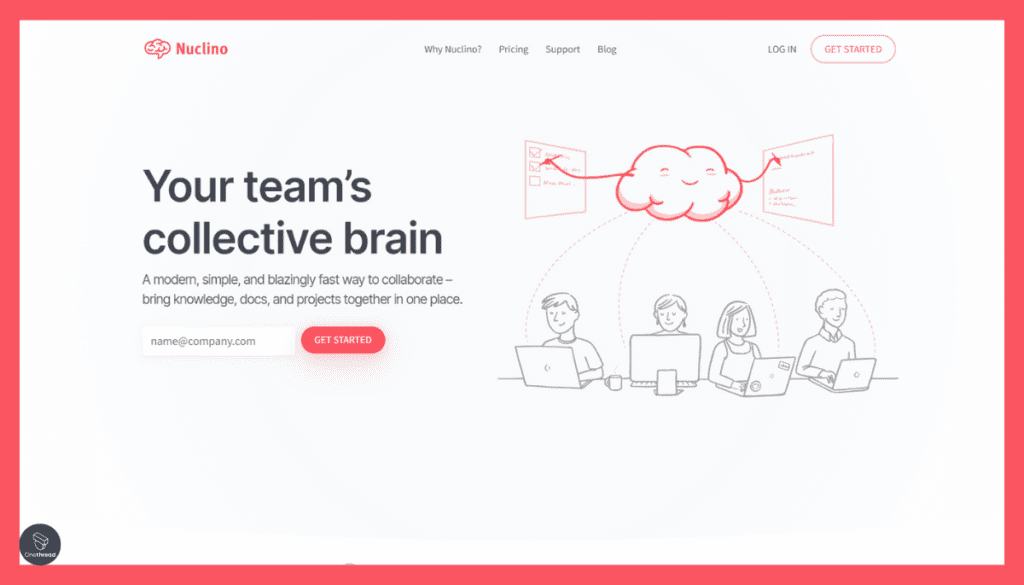
Nuclino is a unified workspace designed to facilitate team collaboration. It allows teams to organize and share information, collaborate in real time, and create a knowledge base.
One standout feature of Nuclino is the ability to create and visualize links between documents, projects, and team members, providing a clear, unified overview of the team’s work.
Features of Nuclino
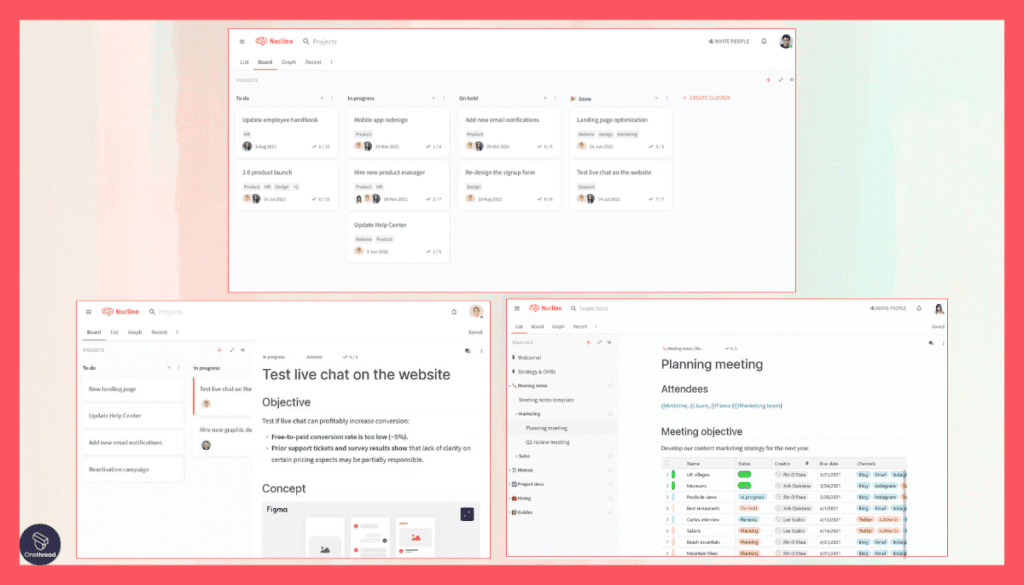
Visual Knowledge Base
Nuclino offers a visual and interconnected knowledge base, allowing teams to create and organize content using a dynamic and intuitive interface. This feature enhances understanding by displaying relationships between information.
This visual approach is particularly useful for brainstorming, project planning, and connecting concepts within complex projects.
Real-Time Collaboration
The platform supports real-time collaboration, enabling team members to collaborate on documents, notes, and projects simultaneously. This feature fosters seamless teamwork, as changes are immediately reflected across all users.
Real-time collaboration is especially valuable for distributed teams or when working on time-sensitive projects.
Flexible Document Creation
Nuclino provides flexible document creation capabilities with a clean and minimalistic text editor. Users can structure content with headers, lists, tables, and more, ensuring readability and clarity.
The simplicity of the text editor promotes distraction-free content creation and encourages teams to focus on ideas and collaboration.
Interactive Boards and Tables
Nuclino offers interactive boards and tables, allowing users to create visual project management tools, mind maps, and task lists. This feature enhances project organization and simplifies complex workflows.
Boards and tables are valuable for tracking progress, managing tasks, and visualizing project components.
Powerful Search and Tagging
Nuclino features powerful search functionality that enables users to quickly locate specific information within the knowledge base. The platform also supports tagging, allowing users to categorize content for easy retrieval.
This search and tagging capability keeps information accessible, even as the knowledge base grows.
Pros and Cons
Pros:
- Visual knowledge base aids in conceptual understanding.
- Real-time collaboration fosters seamless teamwork.
- Flexible document creation promotes distraction-free content.
- Interactive boards and tables enhance project management.
- Powerful search and tagging ensure efficient information retrieval.
Cons:
- Limited advanced formatting options compared to some other tools.
Customer Ratings
- G2: 4.7 (21 reviews)
- Capterra: 4.8 (64 reviews)
Pricing
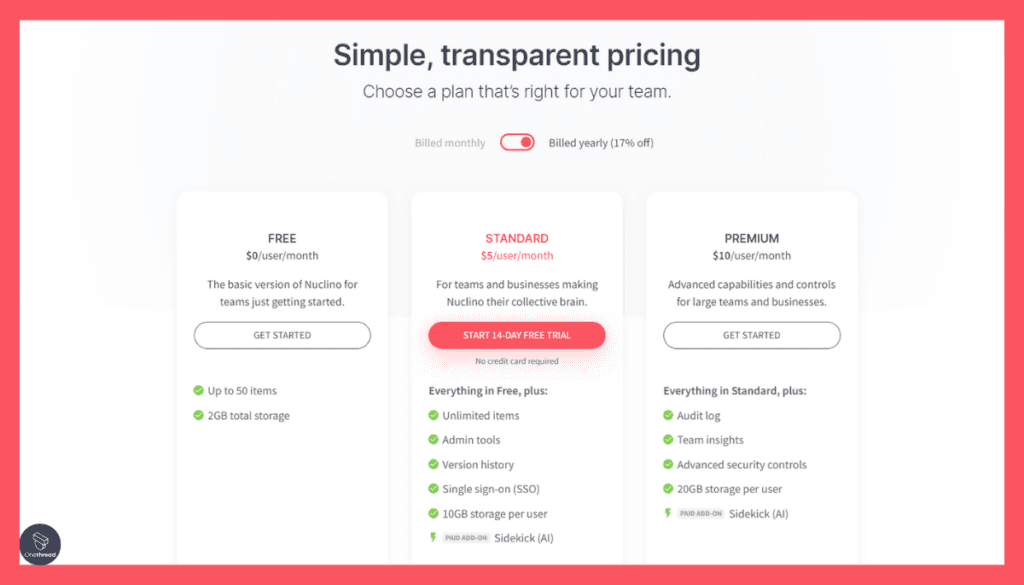
- Free: Limited to 50 items and 5GB storage
- Standard: $5/user/month (billed annually), includes unlimited items and 10GB storage per member
- Enterprise: Custom pricing, includes advanced features like priority support and custom data retention policies
Is Nuclino Better than Confluence?
Whether Nuclino is better than Confluence depends on the team’s needs. Nuclino is known for its simplicity, speed, and ease of use, making it an excellent choice for small teams or those who value a minimalist and intuitive tool.
Confluence, on the other hand, offers a broader set of features and more robust customization options, which may be more suitable for larger teams or more complex projects.
Our Review of Nuclino
Nuclino stands out with its simple, intuitive interface, fast performance, and the ability to visualize connections between different pieces of content. It is especially suited to small to mid-sized teams seeking a straightforward, efficient collaboration tool.
However, it may lack some advanced features that larger teams or organizations might need. Despite this, Nuclino offers an excellent balance between functionality and ease of use, making it a valuable tool for many collaborative environments.
DokuWiki
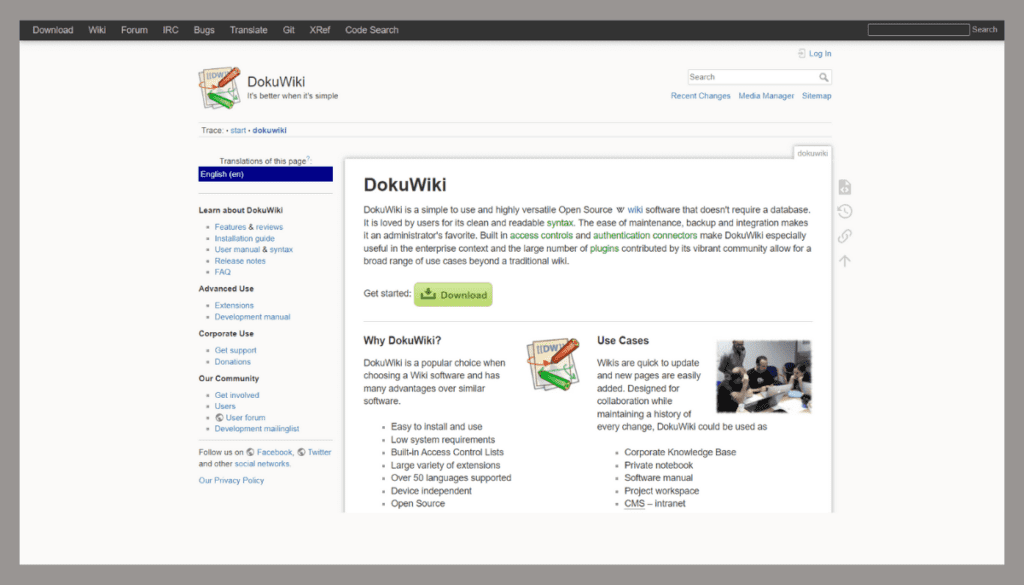
DokuWiki is a standards-compliant, simple-to-use wiki software that allows users to create and manage online documentation. It’s designed for small to medium enterprises and is particularly popular among developer teams.
DokuWiki doesn’t require a database and has a simple file format, making it lightweight and highly flexible.
Features of DokuWiki
Simple Wiki Syntax
DokuWiki employs a simple and easy-to-use syntax for creating and formatting content. The lightweight markup language enables users to write content without the need for complex HTML or coding knowledge. DokuWiki’s syntax is particularly beneficial for those who prefer a straightforward approach to content creation.
Version Control and Revisions
The platform includes built-in version control, allowing users to track changes and revisions made to documents. This feature aids in maintaining a historical record of edits and facilitates collaboration. Version control ensures accountability and helps users revert to previous versions if needed.
Extensible with Plugins
DokuWiki supports a wide range of plugins that enhance functionality. Users can add features such as calendars, galleries, and code syntax highlighting to tailor the platform to their needs. The extensibility with plugins allows users to customize DokuWiki according to their requirements.
Structured Navigation
DokuWiki offers structured navigation through namespaces and pages, providing a hierarchical organization for content. This feature aids in categorization and ensures that content is easily accessible. Structured navigation is particularly helpful for creating knowledge bases and documentation libraries.
Access Control and Permissions
DokuWiki provides fine-grained access control settings. Administrators can define user roles, permissions, and restrictions, ensuring that content is shared only with authorized individuals. Access control enhances security and ensures that sensitive information remains protected.
Pros and Cons
Pros:
- Simple syntax for easy content creation.
- Built-in version control ensures revision tracking.
- Extensible with a wide range of plugins.
- Structured navigation enhances content organization.
- Fine-grained access control provides data security.
Cons:
- Limited in terms of complex content formatting.
Customer Ratings
- G2: 3.9 (12 reviews)
- Capterra: 4.5 (2 reviews)
Pricing
- DokuWiki is open-source software and can be downloaded and used for free.
Is DokuWiki Better than Confluence?
The answer depends on what you’re looking for. DokuWiki is lightweight, simple, and doesn’t require a database, making it a good choice for smaller teams or projects where simplicity and speed are important.
Confluence, however, offers a broader set of features, is more robust, and integrates better with other tools, which might make it more appropriate for larger teams or more complex use cases.
Our Review of DokuWiki
DokuWiki’s major strength lies in its simplicity and speed. Its file-based architecture and the absence of a need for a database make it lightweight and easy to manage. However, its lack of native integrations and a somewhat dated interface may be a drawback for some users.
Overall, DokuWiki is an excellent choice for those seeking a simple, fast, and flexible wiki tool, especially for technical documentation.
Tettra
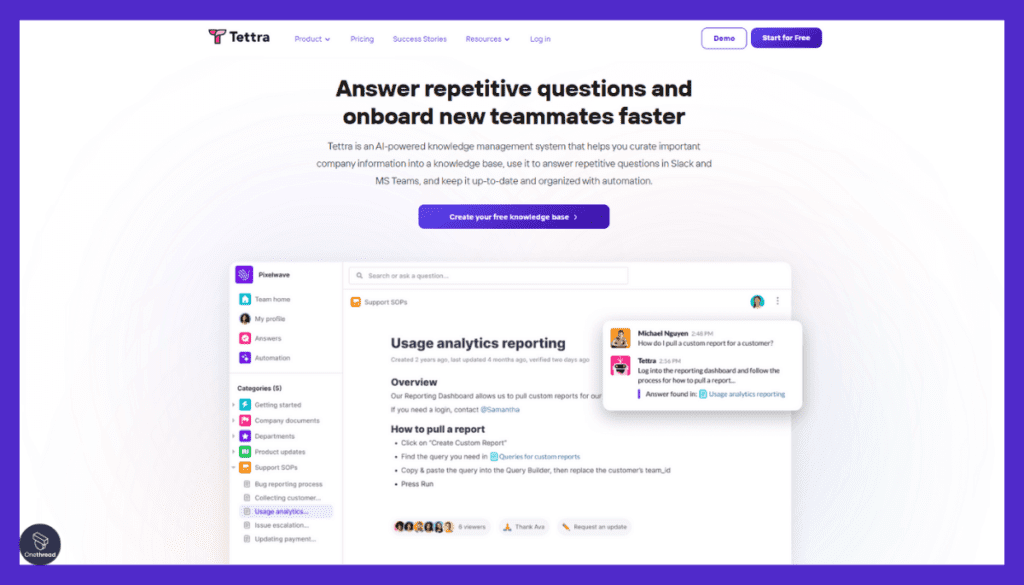
Tettra is a knowledge management platform designed to help teams organize and share information more effectively. It enables teams to create, store, and easily access company knowledge, fostering better decision-making and productivity.
Tettra’s simplicity and ease-of-use, combined with its robust integrations, make it a good choice for teams wanting to create a centralized knowledge base.
Features of Tettra
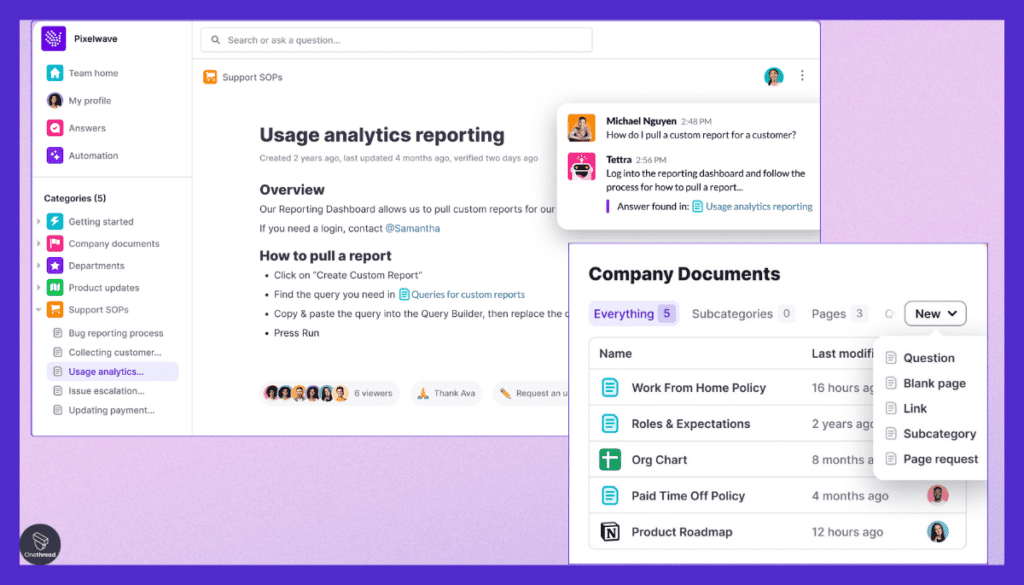
Structured Knowledge Base
Tettra offers a structured knowledge base that allows teams to organize information into categories, sections, and pages. This feature ensures that knowledge is well-organized and easily accessible.
Tettra’s structured knowledge base is particularly useful for storing and sharing documentation, processes, and best practices.
Intuitive Content Creation
The platform provides an intuitive content editor that supports rich text formatting. Users can create and format content without requiring technical skills, streamlining the process of documenting information.
Tettra’s content creation capabilities are especially helpful for capturing internal documentation and company knowledge.
Integration with Collaboration Tools
Tettra integrates with popular collaboration tools such as Slack, making it easy to search for and share knowledge directly within the tools that teams use daily.
This integration enhances information sharing and ensures that knowledge is accessible where teams collaborate.
Search and Discovery
Tettra features a powerful search functionality that allows users to quickly find relevant information within the knowledge base. The search capability extends to content within documents and attachments.
This search feature accelerates information retrieval, ensuring that users can locate information efficiently.
Templates and Workflows
Tettra offers templates and workflows that guide users in creating specific types of content, such as meeting notes or project documentation. This feature promotes consistency and accelerates content creation.
Templates and workflows ensure that important information is captured in a structured manner.
Pros and Cons
Pros:
- Structured knowledge base enhances organization and accessibility.
- Intuitive content creation supports easy documentation.
- Integration with collaboration tools streamlines sharing.
- Powerful search functionality accelerates information retrieval.
- Templates and workflows ensure consistency in documentation.
Cons:
- Some advanced formatting features might be limited.
Customer Ratings
- G2: 4.6 (89+ reviews)
- Capterra: 4.1 (9 reviews)
Pricing
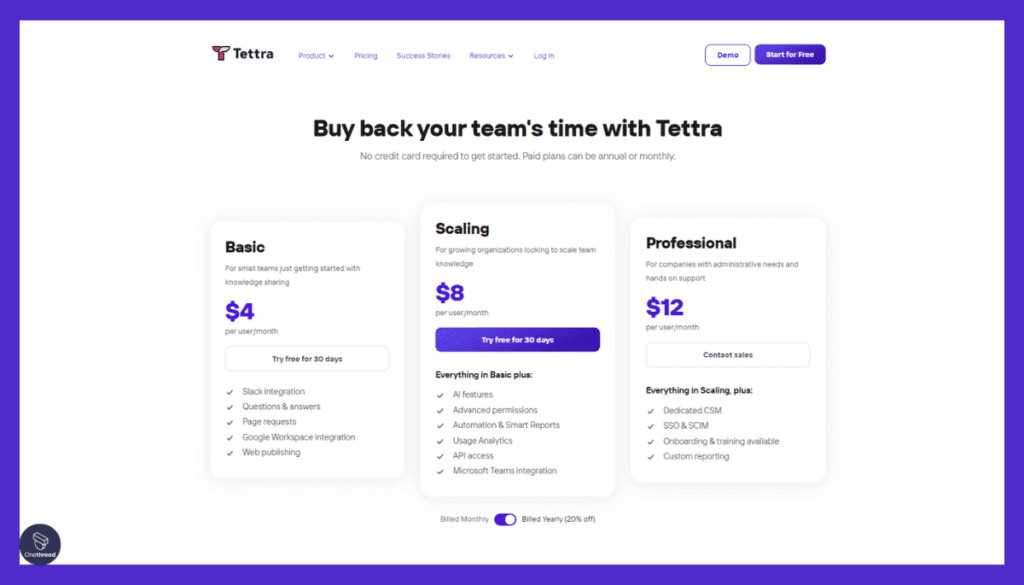
- Free: For small teams
- Standard: $50/month for up to 10 users, $5 per extra user/month
- Plus: $100/month for up to 10 users, $10 per extra user/month
Is Tettra Better than Confluence?
Tettra and Confluence both serve the purpose of a knowledge management platform, but they cater to different needs. Tettra stands out with its simplicity, making it an excellent choice for smaller teams or teams needing a straightforward solution.
However, Confluence offers more robust features, extensive customization, and scales better for larger teams or more complex use cases.
Our review of Tettra
Tettra provides a simple, effective way for teams to manage and share knowledge. Its strength lies in its simplicity, easy setup, and strong integration with Slack, making it particularly useful for teams already using Slack for communication.
While it may not offer the extensive features and customization of Confluence, it presents a compelling option for teams seeking a straightforward, easy-to-use tool.
Choosing the Best Confluence Alternative
Selecting the best alternative to Confluence largely depends on your team’s specific needs and work style. Onethread is the overall best choice for efficient project management, task tracking, team collaboration, and flexible pricing.
If your team is heavily invested in the Zoho or Microsoft ecosystem, Zoho Wiki or Microsoft SharePoint could be a good fit. For developer teams or those focused on codebase documentation, Stack Overflow for Teams or Swimm may be the better options.
If you’re seeking a tool that offers extreme flexibility and customization, Notion would be a great choice. Meanwhile, if your needs are more basic and you want a straightforward, easy-to-use solution, DokuWiki, Nuclino, Tettra, or Slite could be the right fit.
Wrapping Up!
While Confluence is a robust and widely used tool, it may not be the perfect fit for every team or use case. The alternatives mentioned provide an array of features, interfaces, and pricing models that can cater to a wide range of needs.
We encourage you to explore them and see which one aligns best with your team’s workflow. And for a fresh take on team collaboration and knowledge management, why not give Onethread a try? It might just be the perfect Confluence alternative you’re looking for.
Frequently Asked Questions
What are the top alternatives to Confluence?
Top alternatives to Confluence include Stack Overflow for Teams, Zoho Wiki, Swimm, Microsoft SharePoint, Slite, Nuclino, Tettra, DokuWiki, Notion, and Onethread.
Is there a free alternative to Confluence?
Yes, DokuWiki is a free, open-source alternative to Confluence.
Which is better, Notion or Confluence?
Both are robust tools but cater to different needs. Notion is more customizable and flexible, while Confluence is more robust and better suited for larger teams with complex collaboration needs.
Can Confluence integrate with other tools?
Yes, Confluence can integrate with many tools, including Jira, Trello, Slack, and more.
How does the pricing for Confluence compare to its alternatives?
Confluence’s pricing starts at $5/user/month, but it varies based on the plan and number of users. Alternatives range from free (DokuWiki) to varying subscription models, offering flexibility in pricing options.
